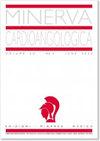Outcome of the elective or online RF ablation of typical atrial flutter.
Q3 Medicine
引用次数: 1
Abstract
INTRODUCTION Radiofrequency ablation of the cavotricuspid isthmus is currently the first-choice treatment of typical atrial flutter and usually it is performed electively. The purpose of this study was to see whether performing on-line ablation has similar clinical results compared to the conventional strategy. METHODS Consecutive patients (465) who underwent ablation of the cavotricuspid isthmus for typical AFL at our electrophysiology laboratory in the 2008-2017 decade were studied. We evaluated the acute and long-term clinical outcomes of those who were treated electively (337) compared to those who had online ablation (128), that is within 24 hours of presenting to the Cardiology department. In patients treated on an emergency basis, a transoesophageal echocardiogram was performed to rule atrial thrombi when needed. RESULTS No significant intraprocedural difference was observed between the 2 patient groups, with comparable acute electrophysiological success (99% vs 98%) and serious complications. Even at the subsequent 4-year follow-up, there were no significant differences in the recurrence of typical AFL, onset of AF and other clinical events. CONCLUSIONS Online ablation of typical atrial flutter performed at the time of the clinical presentation of the arrhythmia, was shown to be comparable in terms of procedural safety and clinical efficacy in the short and long term compared to an elective ablation strategy.选择性或在线射频消融治疗典型心房扑动的疗效。
射频消融是目前治疗典型心房扑动的首选方法,但通常是选择性的。本研究的目的是观察在线消融与传统消融策略是否有相似的临床结果。方法:对2008-2017年间在我们的电生理实验室连续接受腔三尖瓣峡部消融治疗典型AFL的患者(465例)进行研究。我们评估了选择性治疗组(337例)与在线消融术组(128例)的急性和长期临床结果,在线消融术是在心脏病科就诊后24小时内进行的。在急诊治疗的患者中,经食管超声心动图在需要时检查心房血栓。结果两组患者术中无明显差异,急性电生理成功率相当(99% vs 98%),并发症严重。即使在随后的4年随访中,在典型AFL的复发、AF的发病和其他临床事件方面也没有显著差异。结论:与选择性消融策略相比,在心律失常临床表现时进行典型心房扑动的在线消融在短期和长期的操作安全性和临床疗效方面具有可比性。
本文章由计算机程序翻译,如有差异,请以英文原文为准。
求助全文
约1分钟内获得全文
求助全文
来源期刊

Minerva cardioangiologica
CARDIAC & CARDIOVASCULAR SYSTEMS-
CiteScore
1.60
自引率
0.00%
发文量
0
审稿时长
>12 weeks
期刊介绍:
A Journal on Heart and Vascular Diseases.
 求助内容:
求助内容: 应助结果提醒方式:
应助结果提醒方式:


